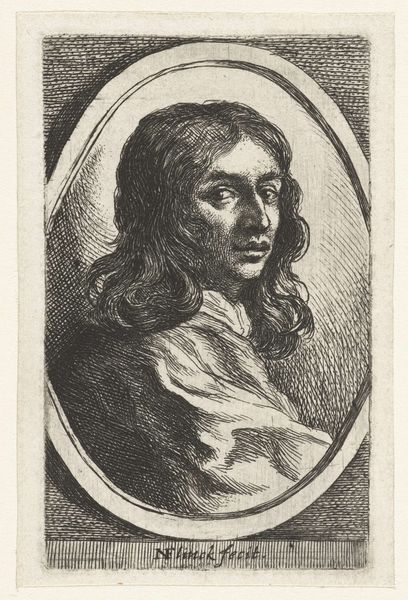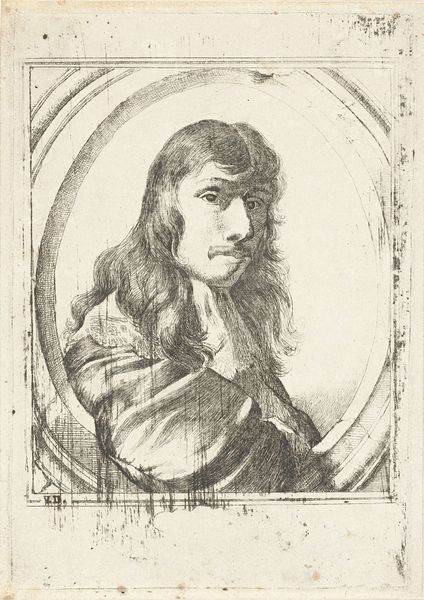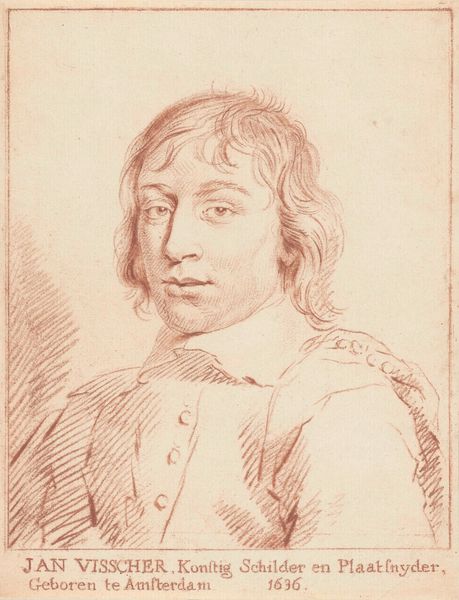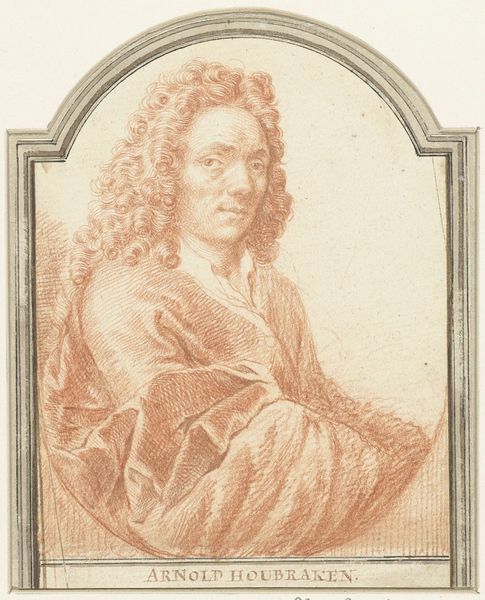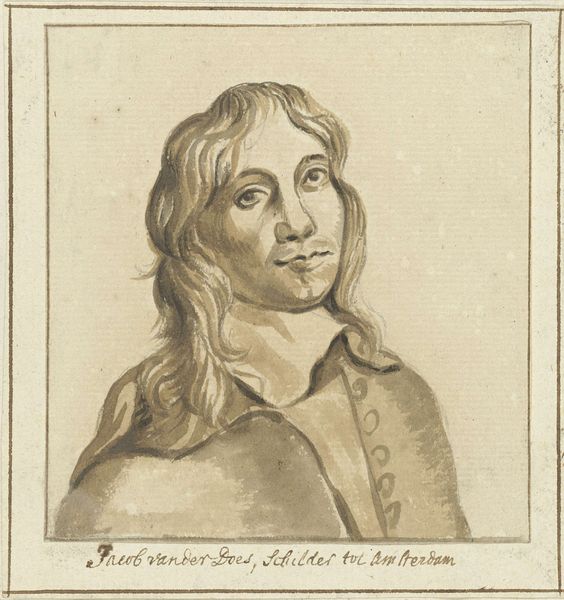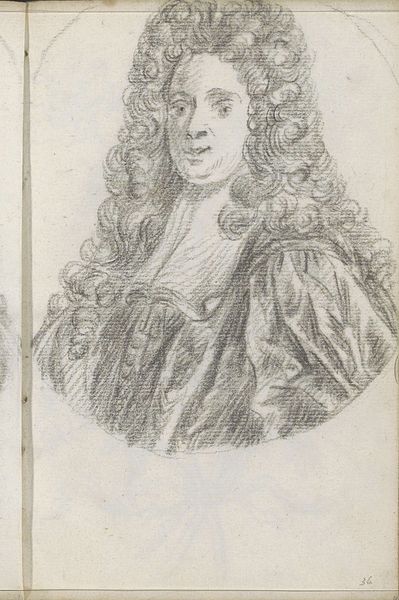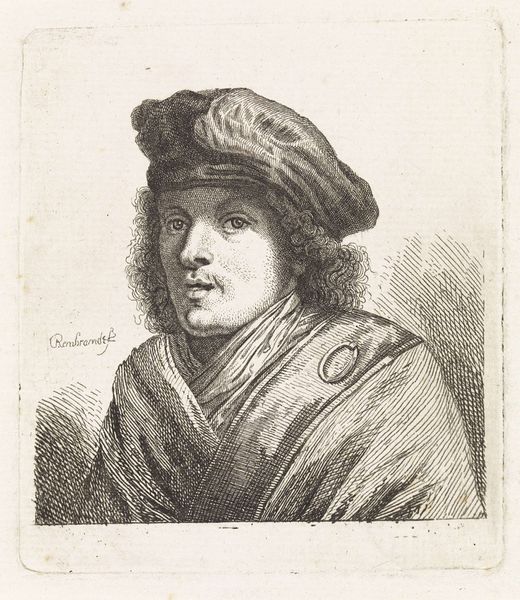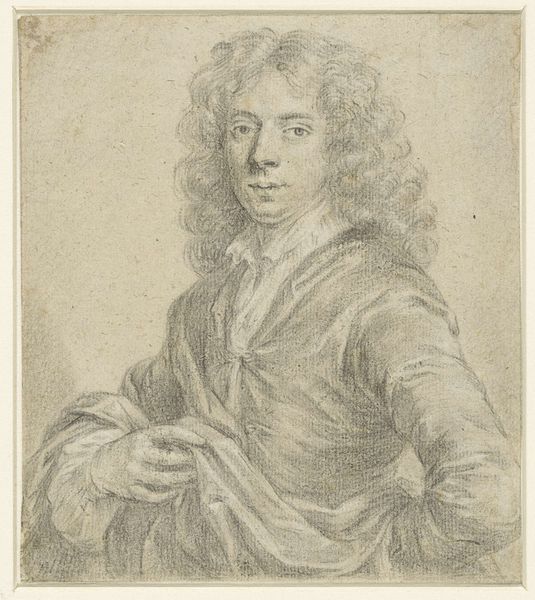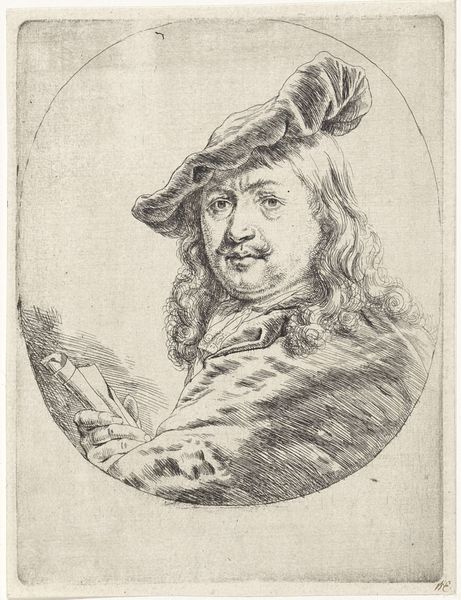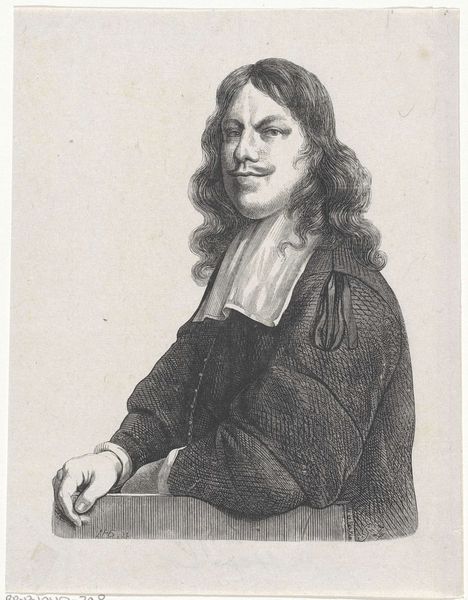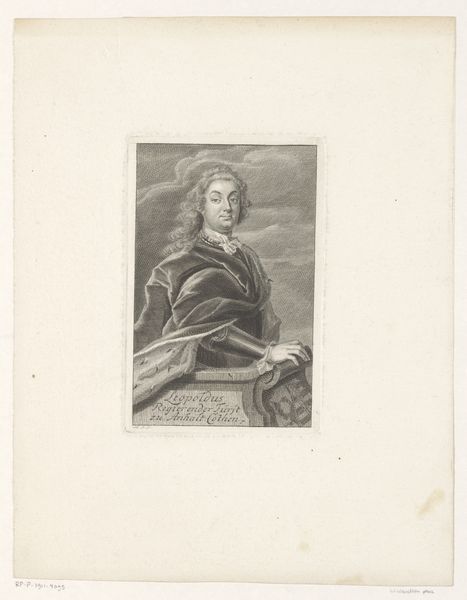
engraving
#
portrait
#
self-portrait
#
baroque
#
dutch-golden-age
#
old engraving style
#
portrait reference
#
limited contrast and shading
#
engraving
Dimensions: height 111 mm, width 92 mm
Copyright: Rijks Museum: Open Domain
Curator: Here we have an engraving, dating sometime between 1634 and 1669, entitled "Self-Portrait" by Nicolaes van Helt Stockade. Editor: My first thought is that it possesses such a melancholic mood. The fine lines and lack of deep shadows create a sense of distance. Curator: That’s a good observation. As an engraving, the lines are everything here. The artist would have used a burin to carve those lines into a metal plate. The varying thickness and closeness of those lines created the light and shadow, really. It’s incredibly labor-intensive. We have to remember the tools available at the time. Editor: Absolutely. And it reminds us that this wasn’t just a solitary act of creation. Think about the workshops, the apprentices, and the societal expectation for artists. An artist like Stockade, engaging with this process was certainly making a statement. The very act of making and distributing prints elevates him socially as well. Curator: Indeed, engravings were a form of mass production. While Stockade may have been engaging with high art through self-portraiture, he was also participating in a wider culture of printmaking. That said, portrait engravings served an important purpose during the Dutch Golden Age. It's as if to declare a citizen as present. It cemented identity for an emerging bourgeois class. Editor: And that act of creating a readily available likeness opens interesting questions about art and power, doesn’t it? The image itself gains currency in a broader cultural context and, to an extent, helps in creating a personal and also shared narrative. Curator: That's definitely right. You see how easily distributed engravings like this facilitated the exchange of ideas and promoted certain individuals and lifestyles. A lasting, portable self-image—very different from an oil painting that was only viewable in the patron’s home. Editor: Exactly. By focusing on the materiality and its production, the engraving becomes far more than a mere picture. The act of distribution becomes an agent. Curator: Precisely! Looking at the engraving has reminded me how profoundly artistic processes are interwoven with their social and economic contexts. Editor: And I appreciate that melancholic moment captured by Stockade reminds us how complex identity formation has been for a very long time.
Comments
No comments
Be the first to comment and join the conversation on the ultimate creative platform.
